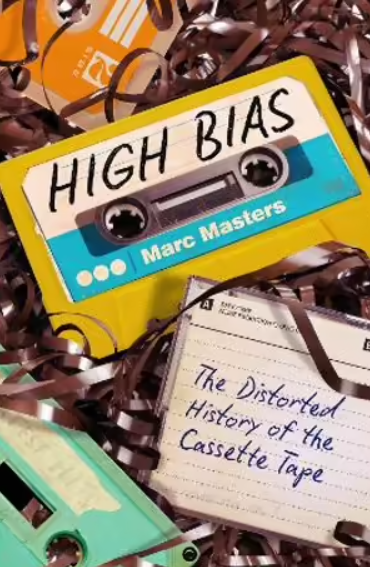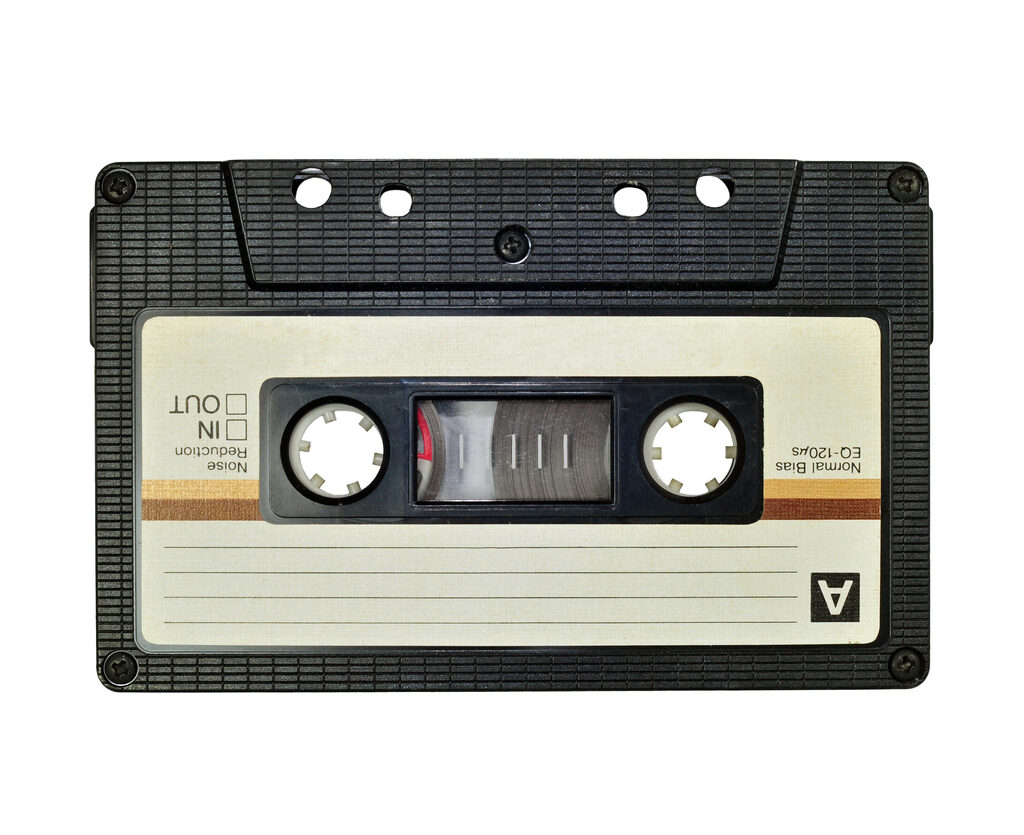Review: High Bias by Marc Masters
A childhood memory of the 1980s is sitting in my sister’s bedroom with her radio/cassette player, my finger poised above the record button, ready to record when our favourite songs came on the radio. This is a common Gen X experience, and cassette tapes provided a low-cost means of home curation of music, decades before the opportunities of internet-based music. Current interest in cassette tapes may be part of nostalgia for the eighties generally, but Marc Masters, in this highly entertaining book, writes about their lingering, surprising impact on contemporary culture.
Tapes operate by magnetic recording. Early in the twentieth century Fritz Pfleumer improved on wire recording devices by putting iron oxide on paper tapes, fed through a reel-to-reel machine created by German company AEG. Fast forward a bit to the 1960s, and Learjet engineers made an eight-track cassette (‘cassette’ being a French term meaning ‘little case’). The cassette, or tape (or cassette tape or tape cassette), that was so big in the 1980s comes from a Phillips engineer, Lou Ottens, who in 1963 made the small plastic case and the compact recording machine it fitted in, to replace older, more cumbersome models. Phillips agreed with Japanese companies on a standard format, birthing their global ubiquity.
Initially, in the 1960s, the cassette tape was intended for voice recordings. Music on these tapes wasn’t of the best quality, but the upsides of portability and recordability outweighed the downsides. At opposite ends of the scale, tapes allowed for the creation of the Boom Box and the Walkman. (Eventually the Walkman would become the iPod.) The Walkman was initially unique for allowing users to walk the streets in their own bubble of sound.

At the start of the 1980s, electronics companies offered four-track recorders, allowing bands to record without expensive studio time. This created an underground scene independent of commercial radio and big record companies, and the tapes artists made had an appealing rawness and intimacy. Mixtapes were a prominent feature of the flowering hip-hop scene in New York. Tapes were important for international underground scenes. Demos and rarities would get posted around the world between fans, and there was something satisfying about the anticipation and reward involved in receiving things in the mail, unlike the instant access of the internet.
Tapes allowed for little record labels that could promote little-known bands. The format suited bands such as The Mountain Goats, who wanted to release lots of songs quickly. (This did generally involve hours of monotonous dubbing of tapes.) It also suited those experimenting with sound collages. Artists could control artwork, customise and personalise it if they liked. Masters (a great name for someone writing about tapes) has poked around and discovered scores of examples.
Zines were created to cover tape (only) releases; sometimes zines were released as tapes. Artists used tape players in performance art and happenings. The hands-on feel and potential for random glitches is inspiring for some. For a few, using tapes is about recycling old tech and not contributing to growing e-waste.
In places like the Middle East and Asia, besides their reputations as dens for bootlegging, tapes allowed for the cheap proliferation of local but often ephemeral music, so the format was extremely popular. (In the 1980s, one reason for Australians to holiday in Bali was the availability of cheap knock-off albums on tape). Masters reports on tape hunters who seek out rare cassettes across the globe, to unearth music previously unheard in the West, but many inevitably end up in landfill. (The tapes, not the hunters.) But counterfeiters in those regions also exposed local populations to Western music they might not have heard otherwise. Tapes also circulated the revolutionary ideas of dissidents (such as in China before the Tiananmen Square massacre), and they were more convenient for the dissemination of religious audiobooks, including the Bible. Televangelists often did a roaring trade in their books on tape.
In the 1980s record companies pushed a moral panic over taping being a means of stealing music. (The burgeoning printing industry had the same problem in the Middle Ages.) There were all sorts of court cases and preventative measures which mostly came to nought. The technology allowed for mixtapes, which meant you could be your own DJ, able to curate playlists beyond the dictates of radio or record companies. Taping concerts became a big thing. Often this was just for sharing between fans rather than commercial gain, though authorities tried to stop it. It could be argued though that taping concerts only helped bands, and some bands caught on, most notably The Grateful Dead, around whom a whole taping culture coalesced. Some tapers amassed thousands of live tapes. Magazines and mail lists inevitably followed. Ironically, Lars Ulrich of Metallica was an avid taper in his youth, before he was a key critic of online music sharing platform Napster.
There is something personal and democratic about cassette tapes. Vinyl lends itself to serious music aficionados; cassettes have the kitschy appeal of shallow 80s pop. But many of the tape enthusiasts Masters quotes are quick to point out that the appeal is more than nostalgic, and that there has been a persistent, experimental tape culture that flies under the radar of contemporary trends and in the face of corporate supply chains and promotion machines. Masters focusses on music largely, but well into the 2000s older users, used to the technology, were, for example, still buying Bibles and religious books on tape.
There is a repeated refrain from tape enthusiasts throughout Masters’s book that tapes have a warmth that digital formats don’t have. Some like the limitations of the format and the fact that tapes degrade, and that you can just pop in a tape at random, without having to know what you want to hear before you call it up. And there is something about the physical nature of the cassette, which some have described as feeling ‘just right’. I think of it as a bit like why people continue to print underground magazines rather than just point people to a website.
Nick Mattiske blogs on books at coburgreviewofbooks.wordpress.com and is the illustrator of Thoughts That Feel So Big.






